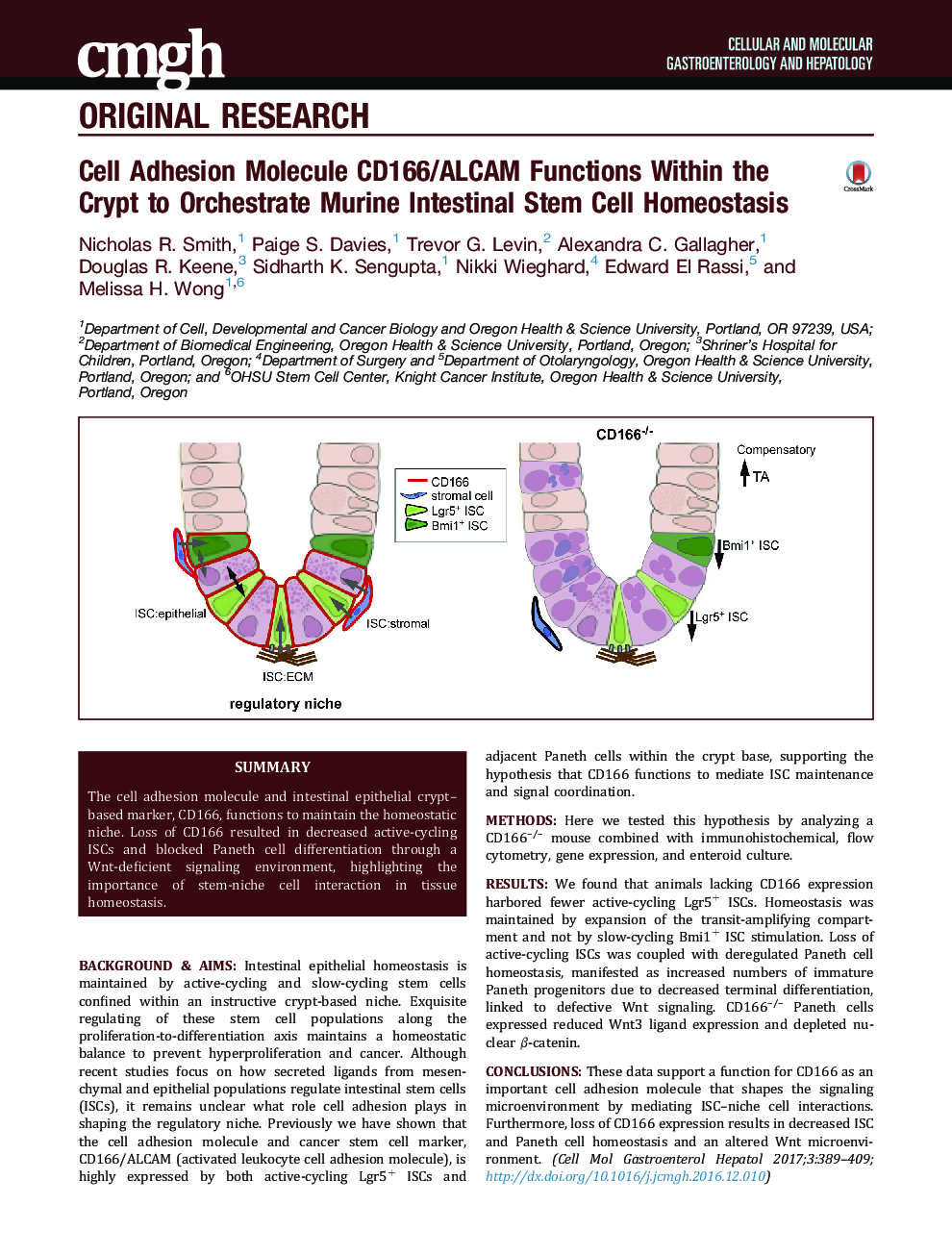| کد مقاله | کد نشریه | سال انتشار | مقاله انگلیسی | نسخه تمام متن |
|---|---|---|---|---|
| 5517228 | 1400956 | 2017 | 21 صفحه PDF | دانلود رایگان |

Background & AimsIntestinal epithelial homeostasis is maintained by active-cycling and slow-cycling stem cells confined within an instructive crypt-based niche. Exquisite regulating of these stem cell populations along the proliferation-to-differentiation axis maintains a homeostatic balance to prevent hyperproliferation and cancer. Although recent studies focus on how secreted ligands from mesenchymal and epithelial populations regulate intestinal stem cells (ISCs), it remains unclear what role cell adhesion plays in shaping the regulatory niche. Previously we have shown that the cell adhesion molecule and cancer stem cell marker, CD166/ALCAM (activated leukocyte cell adhesion molecule), is highly expressed by both active-cycling Lgr5+ ISCs and adjacent Paneth cells within the crypt base, supporting the hypothesis that CD166 functions to mediate ISC maintenance and signal coordination.MethodsHere we tested this hypothesis by analyzing a CD166-/- mouse combined with immunohistochemical, flow cytometry, gene expression, and enteroid culture.ResultsWe found that animals lacking CD166 expression harbored fewer active-cycling Lgr5+ ISCs. Homeostasis was maintained by expansion of the transit-amplifying compartment and not by slow-cycling Bmi1+ ISC stimulation. Loss of active-cycling ISCs was coupled with deregulated Paneth cell homeostasis, manifested as increased numbers of immature Paneth progenitors due to decreased terminal differentiation, linked to defective Wnt signaling. CD166-/- Paneth cells expressed reduced Wnt3 ligand expression and depleted nuclear β-catenin.ConclusionsThese data support a function for CD166 as an important cell adhesion molecule that shapes the signaling microenvironment by mediating ISC-niche cell interactions. Furthermore, loss of CD166 expression results in decreased ISC and Paneth cell homeostasis and an altered Wnt microenvironment.
285
Journal: Cellular and Molecular Gastroenterology and Hepatology - Volume 3, Issue 3, May 2017, Pages 389-409